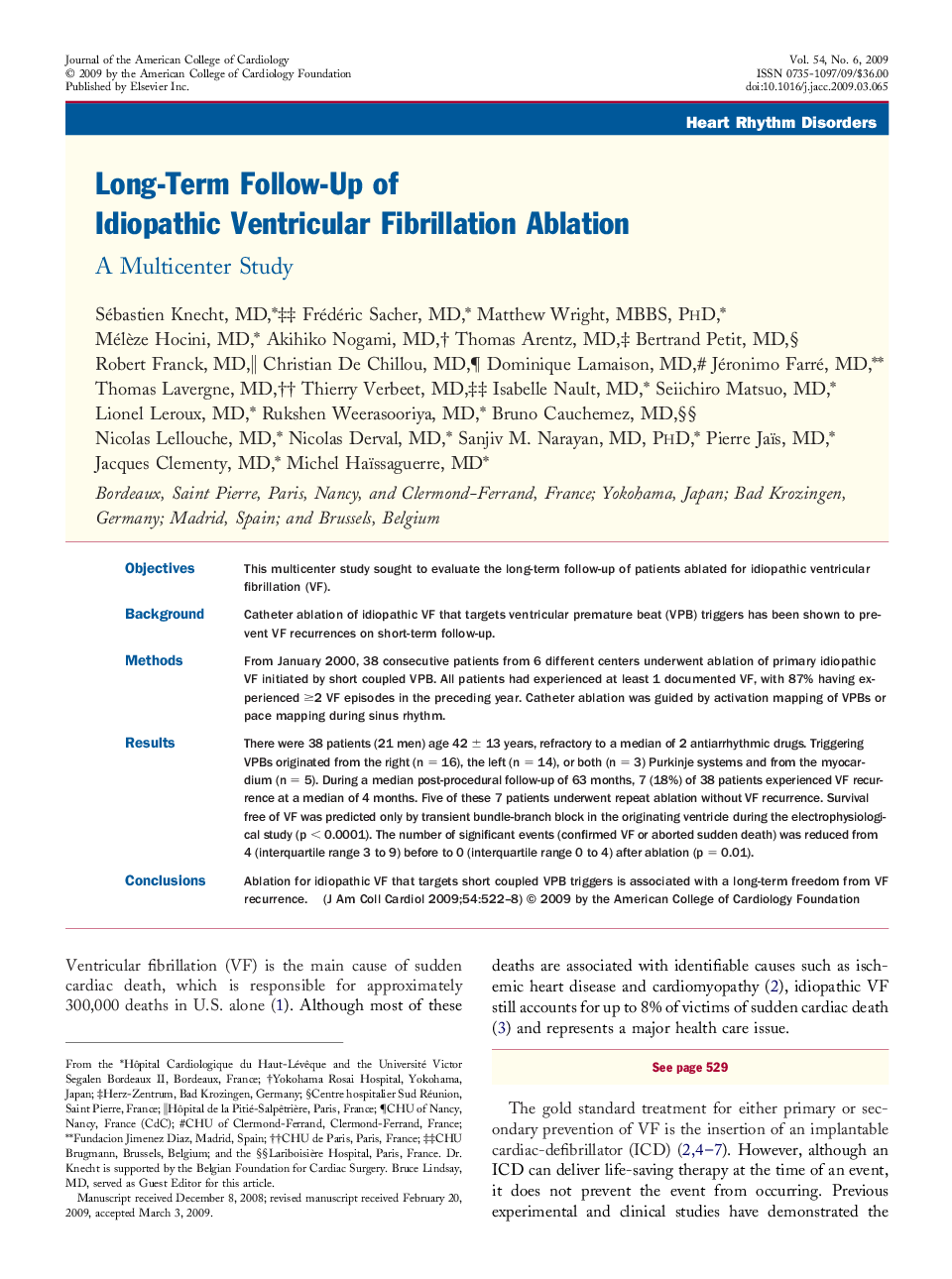| Article ID | Journal | Published Year | Pages | File Type |
|---|---|---|---|---|
| 2950682 | Journal of the American College of Cardiology | 2009 | 7 Pages |
ObjectivesThis multicenter study sought to evaluate the long-term follow-up of patients ablated for idiopathic ventricular fibrillation (VF).BackgroundCatheter ablation of idiopathic VF that targets ventricular premature beat (VPB) triggers has been shown to prevent VF recurrences on short-term follow-up.MethodsFrom January 2000, 38 consecutive patients from 6 different centers underwent ablation of primary idiopathic VF initiated by short coupled VPB. All patients had experienced at least 1 documented VF, with 87% having experienced ≥2 VF episodes in the preceding year. Catheter ablation was guided by activation mapping of VPBs or pace mapping during sinus rhythm.ResultsThere were 38 patients (21 men) age 42 ± 13 years, refractory to a median of 2 antiarrhythmic drugs. Triggering VPBs originated from the right (n = 16), the left (n = 14), or both (n = 3) Purkinje systems and from the myocardium (n = 5). During a median post-procedural follow-up of 63 months, 7 (18%) of 38 patients experienced VF recurrence at a median of 4 months. Five of these 7 patients underwent repeat ablation without VF recurrence. Survival free of VF was predicted only by transient bundle-branch block in the originating ventricle during the electrophysiological study (p < 0.0001). The number of significant events (confirmed VF or aborted sudden death) was reduced from 4 (interquartile range 3 to 9) before to 0 (interquartile range 0 to 4) after ablation (p = 0.01).ConclusionsAblation for idiopathic VF that targets short coupled VPB triggers is associated with a long-term freedom from VF recurrence.
